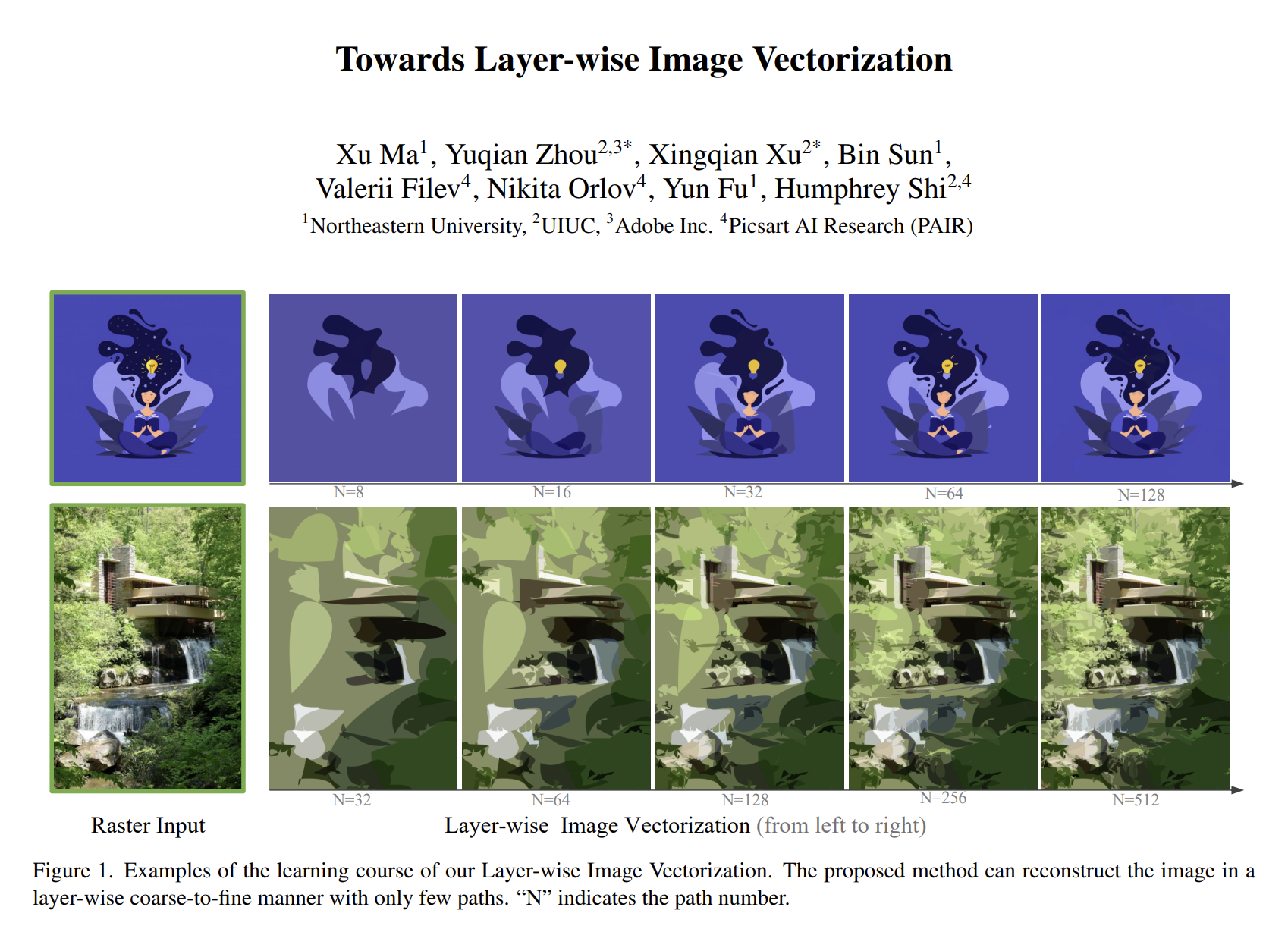Ma et al. (2022) | LIVE: Towards Layer-wise Image Vectorization¶
The paper by Ma et al. (2022) builds upon the work of Reddy et al. and deals with converting raster images into vector images (“vectorization”).
This paper was presented at CVPR 2022 (oral presentation).
Available resources at a glance
Limitations and remarks¶
The proposed vectorizing model is still limited. On page 17 of the paper (as submitted to ArXiv), one can find an example that illustrates the limitations.
The input image is a raster image that was originally designed as a vector image but had been rasterised. The image shows two mountain peaks in front of the rising or setting sun. It is obvious that the sun had been designed in the original vector image using three concentric circles.

Fig. 55 Rasterised image used as input¶
The vectorized output (for N=128) produced by LIVE is clearly better than the DiffVG output it was compared against. But the LIVE model did not recognise the three concentric circles that were originally used to create the sun. Instead, the vectorized shapes are much more complex, contain errors and even use more than the three colors that were originally used.

Fig. 56 Vectorized image used as output¶
A semantically aware vectorizer would attempt to “understand” which shapes would have been most likely to have resulted in the raster image.
